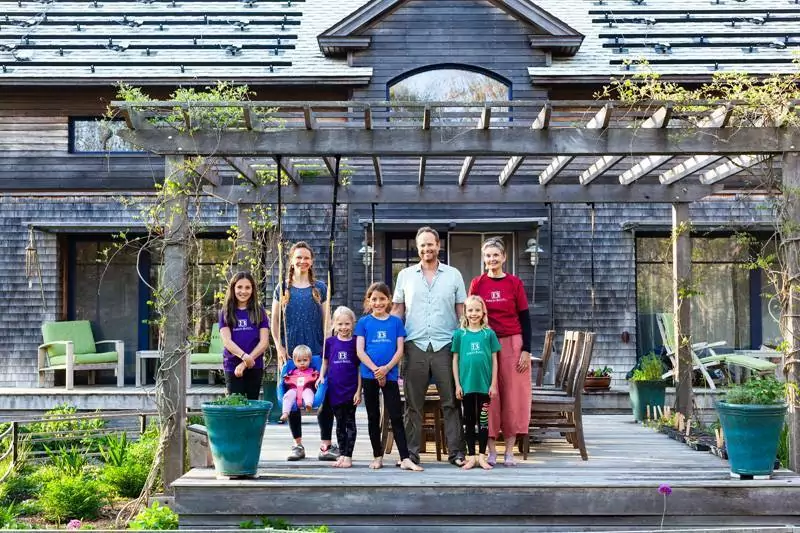A builder takes a passive progressive approach to building for his family and his Island.
Farley Pedler, an Island builder who specializes in energy-efficient and affordable housing, is partway through a giant experiment on his own land. The experiment involves R-values, exterior trusses, European-engineered glass windows, a family of five, and very little wasted electricity.
One part of it is already finished: an 800-square-foot cottage, built in 2014 on Dr. Fisher Road in West Tisbury, which has been certified as one of the most energy-efficient homes in the country by the Passive House Institute U.S.
Next door is part two: a new house, more than four times larger, that Pedler is building to the same careful standards. It’s the product of lessons learned from the cottage, as well as years spent building and studying other dwellings that are sustainable, affordable, and pleasant to live in.
Pedler’s fingerprints are on buildings all over the Vineyard, from complex multi-family developments like the Island Housing Trust’s Water Street project in Vineyard Haven, to compact getaways like an airy, high-ceilinged house in Chilmark that was recently featured in Residential Design magazine.
When Pedler, whose passion for affordable housing stems from personal experience as an Island renter, finally had the chance to build his own house in 2013, he wanted to beat even the stringent sustainability standards of his past work. He settled on designing a passive house, an ultra-efficient dwelling that uses almost no energy for heating and cooling, and very little electricity overall.
“Housing makes up 40% of our carbon emissions in this country: our heat, hot water, air conditioning, lights, cooking, they all contribute to that number,” Farley told me. He thinks we can knock that number down to zero, “by simply making some small changes in the way we construct buildings. From a climate change perspective, we can easily preserve this planet for future generations.”
Passive houses were just a glimmer in the eyes of a few hundred builders across the country when Pedler started work on his cottage, but the design standard is now in full swing. Not only are people building more and more homes to this standard, but larger passive buildings are going up, too.
When I paid a visit one evening in late spring, the future generations were roaming the porch and lawn of Farley’s cottage, including Pedler’s own children, Kazmira, Bhu, and Samara, and their “quarantine family,” neighbors Kyla and Casey. Farley and his wife, Daryl, built the small home in 2014 on a sandy wooded lot near the West Tisbury school. Kazmira, age eight, is the only kid in the family who has lived in anything other than a passive building.
About balancing family needs with green building aspirations, Farley told me, “I have an amazing wife who is very trusting of me. When I told her what I wanted to do with our house she said, ‘sure, as long as I have a kitchen, a bathroom and a bedroom, you can do whatever you want!’”
For both the cottage and the new family project, “The basic principles are orienting the house: good windows, air sealing, and a robust insulation package,” Pedler explained as we stood on his building site and compared the two. That’s why both structures face due south: they exploit the sun for heat in the winter, and shaded windows keep rays at bay in the summer.
The most crucial variable is what Pedler calls the “envelope,” or the barrier between the air inside the house and the air outside. “I realized early on that it’s important to have a robust envelope, added insulation, and to really pay attention to good air sealing,” he said. “If you’re not getting good air sealing to make an airtight envelope, it doesn’t really matter how much insulation you have, it’s not going to perform.”
After designing for thick insulation (the walls of the cottage are more than a foot deep), the task is to put the house together tight enough that the only air coming in or out is through a mechanical exchange system. This tight control of airflow minimizes heat loss, and has the added benefit of keeping indoor air quality much higher than average. This is an important consideration, since repeated exposure to indoor pollutants can trigger respiratory problems and other adverse health issues according to the EPA.
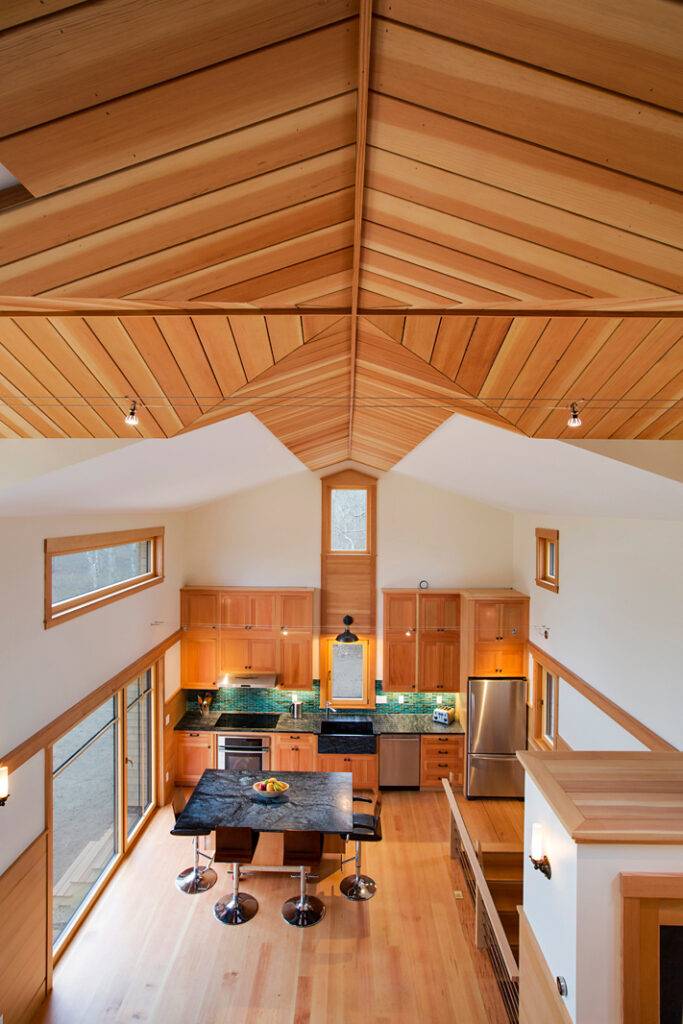
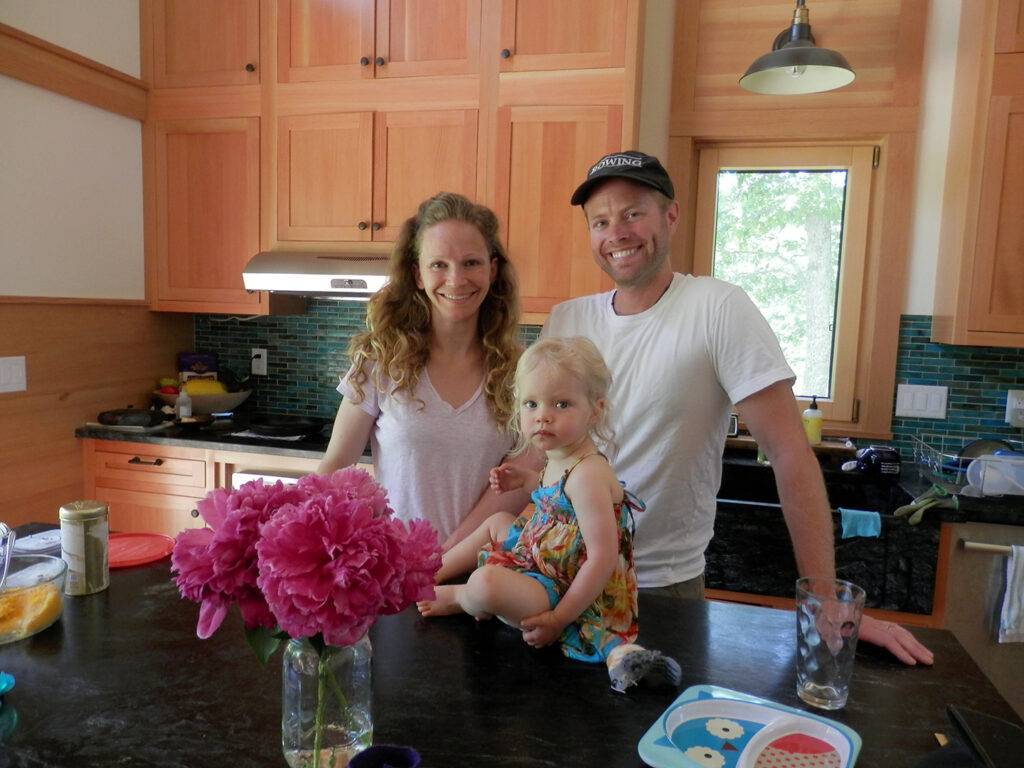
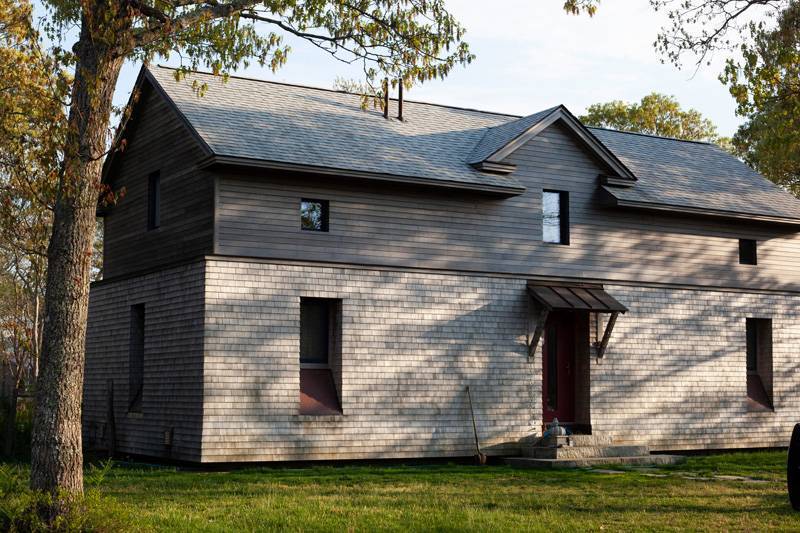


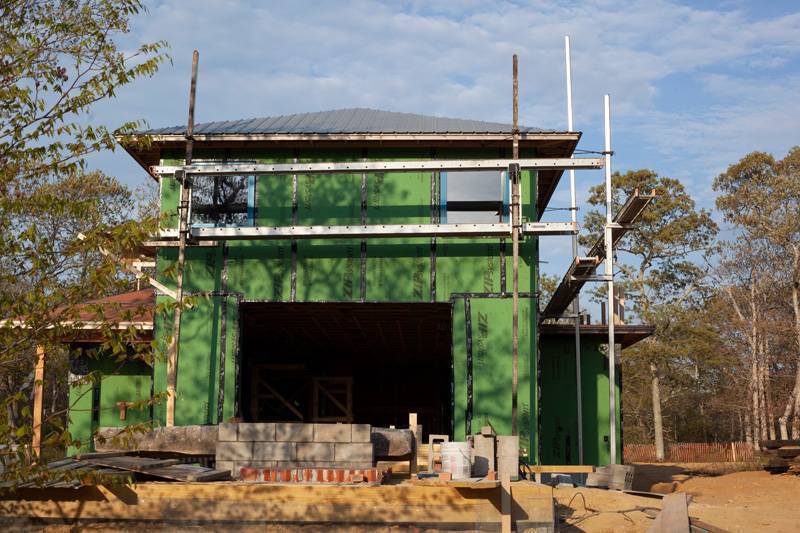
Constructing a passive house is a delicate operation. The building materials have to be carefully installed so there are no gaps in the exterior. Then the science experiment goes into full swing. First, Pedler uses a “blower door,” which seals off the exterior doorway and has a built-in fan. With the house plugged up, the blower door acts like a bike pump on a tire — it can increase or decrease the pressure of the air inside. Gaps in the construction are revealed by how hard the fan has to work to maintain a particular pressure inside the house.
This gives a reliable measurement for air leakage, but Pedler also uses a smoke test, which sounds like the fun part. “You fill the house up with one of those smoke machines that you’d see at a nightclub,” he said, “and you pressurize the house, so you can see where it starts leaking out.”
Even minor details, like a few unfilled holes, can create major headaches unless they are caught at this stage. While building the cottage, he said, “I thought we had gone over and filled all the holes, but it turned out we missed two, and we had this smoke just pouring out.”
Once the envelope is built, the remaining components are European-made windows (triple-glazed for insulation and designed to let in more of the sun’s heat than most American ones), the air exchange machinery, and a minimalist heating and cooling system that uses far less energy than a typical home. Altogether, a home built to passive house standards uses up to 90% less energy for temperature regulation and 60% less overall, according to the nonprofit PASSIVEHouse Massachusetts.
“We have no fossil fuels so there is no propane or oil bill,” Pedler told me. Once solar panels are installed, which he is in the process of doing on the cottage, “our annual energy bill will be $0.”
“The new house is quite a bit bigger,” Farley told me. “But four times the size doesn’t translate to four times the consumption.” Based on his energy model, the big house will use about twice as much electricity as the small one, “which will be offset 100% by solar panels,” he said.
Pedler says he’s looking forward to doing the smoke test on the new house with the whole family. “This time it’s going to be a lot of fun, because we’re going to have a house full of smoke, and we’re going to have everybody outside looking for leaks.”
Passive houses were just a glimmer in the eyes of a few hundred builders across the country when Pedler started work on his cottage, but the design standard is now in full swing. Not only are people building more and more homes to this standard, but larger passive buildings are going up, too. The Finch Cambridge building just became the second-ever certified passive multifamily building in Massachusetts. The first, South Boston’s Distillery North, is a luxury apartment building, but the Finch is the city’s biggest affordable housing project in the past forty years.
When Pedler was looking for ways to build his first home as sustainably as possible, he got help from a Redding, Mass. architect named Steve Baczek, whom he had read about in an article in the Journal of Light Construction. “[Steve] was talking about passive houses, and I was like, oh, he’s already done one,” Pedler said. “I’ve done a lot of energy-efficient houses but I’ve never done something as stringent as a passive house. Steve and I and my wife worked together to come up with [the cottage] design. And same thing with the main house.”
Soon after, Pedler penned his own article for the same journal, detailing the building process for his cottage. “When I get asked about building a house to this extreme level,” he wrote, “my answer is that it’s not difficult, just different.”
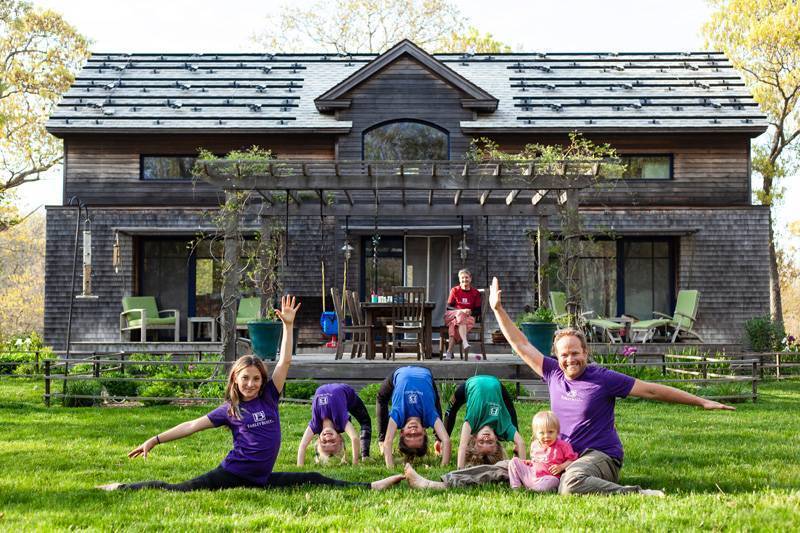
And so, despite being as busy as any Island builder, Pedler continues work on his own house, and is proud to have proof of concept on his own land. His zeal for green building is infectious, and more passive houses have cropped up on the Island, as well as other ambitious sustainable housing. “It didn’t take rocket science to get us here,” he wrote to me. In Farley’s view, building science and common sense are all it takes to make a big difference in our footprint — on the Island, and in the world.
He also thinks that well-built, energy-efficient homes should not only be the domain of the rich. “Everybody should have the right to live in a comfortable, healthy home,” he told me. “The envelope of an affordable house really should not be any different than what we’re building for anyone else. The principles are the same.”
As for the results of his own long-term experiment, he told me, “Having never lived in such a house, I had no idea what I was getting myself into. Now having lived this experience for seven years, I can’t imagine doing it any other way.”

